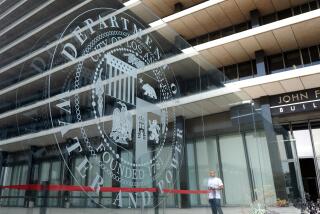Op-Ed: The costly, hidden tax on DWP customers
The Department of Water and Power has proposed a rate increase to pay for its shift to renewable energy, and to replace such things as power poles and transformers in its crumbling infrastructure. But as this paper reported recently, about 20% of the additional revenue from electricity would be diverted to the city of Los Angeles’ general fund, and become available for the mayor and City Council to use for whatever programs and services they choose. This diversion is in effect a hidden tax on ratepayers, who think they’re paying only for DWP power costs.
Here’s the background. Los Angeles imposes a utility tax — currently 10% on residential customers and 12.5% on commercial customers — on DWP’s electricity revenue. It also mandates that the agency annually pay to the city, through a so-called power transfer, 8% of all revenue raised from the sale of electricity.
In 2014, this transfer alone amounted to $266 million, and the two sources combined provided the city with $600 million. If the rate increase is approved, the 20% going to city coffers would amount to an additional $440 million to $450 million over five years. If the rate increase is not reversed after five years, the city would continue to get a projected annual windfall of more than $100 million.
We and other San Fernando Valley business leaders — such as James Dunn, Nicholas T. Hariton, Allen Lawrence, Walter Mosher, Sepand Samzadeh and Jane Skeeter — offer a counterproposal.
The planned rate hike must still go through an approval process that includes the city’s Water and Power Commission, the mayor and the City Council. Before they give the green light, DWP should be able to show that the increase is truly necessary to pay for deferred maintenance and modernization of its infrastructure, compliance with state and federal mandates, and energy efficiency and water conservation projects.
Then 100%, not just 80%, of the incremental revenue produced from the higher rates should be allocated to the three initiatives. Not one dime of the increase should be used to enrich the city’s general fund.
The mayor’s representatives have said that the DWP’s needs, and not the demands of the city budget, are behind the push for higher electricity rates. So the mayor and the City Council should be agreeable to redirecting all of the additional revenue to a special, segregated fund earmarked specifically and exclusively for the three initiatives. The city’s Office of Public Accountability ratepayer advocate would conduct an annual audit to verify that the fund is properly administered.
Our plan would give the DWP funds for its stated goals and ensure that ratepayers are paying just for them, not a City Hall wish list. And by redirecting only the incremental revenue produced by the higher power rates, the proposal is revenue neutral to the city. Los Angeles would continue to receive the same amount of money from the utility tax and power transfer that it gets today.
Gregory N. Lippe is a San Fernando Valley CPA and former chairman of the Valley Industry & Commerce Assn. Richard F. Moss is president of a San Fernando Valley-based real estate group and a former DWP commissioner.
Follow the Opinion section on Twitter @latimesopinion and Facebook
More to Read
A cure for the common opinion
Get thought-provoking perspectives with our weekly newsletter.
You may occasionally receive promotional content from the Los Angeles Times.










